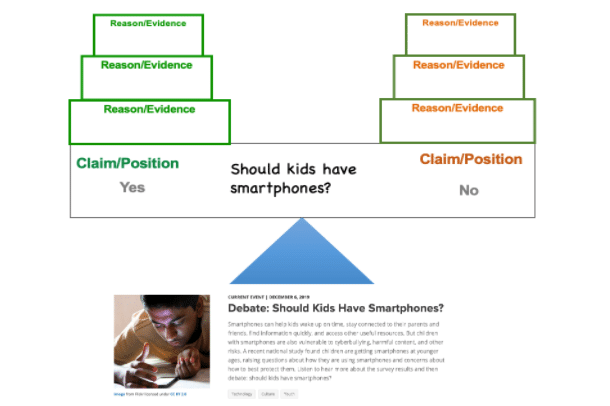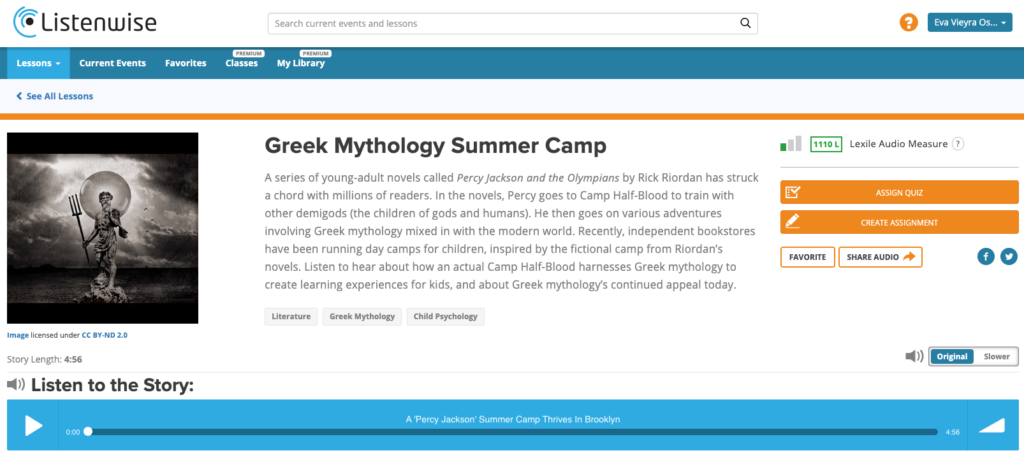Last Updated on August 11, 2023
Listenwise recently participated in an Edweek webinar, “Strategies for English Learners,” featuring Stanford’s Dr. Jeff Zwiers. In this webinar, Dr. Zwiers shared insight and research on teaching strategies for listening and speaking skills designed to help English learners acquire academic vocabulary using podcasts. Included in the discussion were examples of three listening comprehension tools that teachers can use to boost and assess comprehension in the classroom.
If you would prefer to watch the webinar – it is available on the Listenwise YouTube channel.
Otherwise, read our list of three listening comprehension tools for the classroom shared by Dr. Zwiers and Listenwise founder Monica Brady-Myerov during their conversation.
1. Stronger and Clearer Each Time
(Zwiers, O’Hara, & Pritchard, 2014)
The goal of this activity is to give students an opportunity to strengthen and clarify their ideas. By engaging in this exercise, English learners practice listening skills and develop their academic vocabularies as they build and borrow the ideas and language of previous partners.
To begin, assign four different texts about a similar topic. In the example below, we focus on topics and issues related to immigration and the American Dream. Next, divide students into groups of four and assign them a letter A-D. Then, assign each student in the small groups their own podcast to listen to (for example, all As will listen to “New Immigrants and Ellis Island Today”). Instruct students to listen and then orally develop an original response after listening through conversation within their group. This response might be an opinion, idea, explanation, or the like. Students may take notes as they listen, however Dr. Zwiers recommends that they keep them brief (no summarizing) so that they don’t simply read from their notes.

Once students have finished listening, ask them to turn and deliver their response to a neighbor (i.e., A talks to B, C talks to D). After they have shared, they may wish to take additional notes to strengthen their response based on what their partner shared. Once the first round of sharing and refining is done, students should switch partners again and repeat the activity. By the end, the students’ responses should have become stronger and clearer than they were at the beginning.
2. Collaborative Argument
(Zwiers, O’Hara, & Pritchard, 2014)
This listening comprehension tool asks teachers to use podcasts to provide content for students to develop a collaborative argument. Just as with “Stronger Clearer Each Time,” this activity serves to build academic vocabulary and listening skills. First, provide students with a text to listen to and ask them to develop an opinion on the subject of the podcast. Instruct them that their opinion must be supported by reasons and evidence found in the text. Next, divide students into pairs and ask them to work together to complete a collaborative argument chart like the one seen below for “Debate: Should Kids Have Smartphones.” To complete the chart, students should place the strongest/heaviest arguments in support on one side, and do the same for the “against” side.

After they’ve populated each side of the scale, students should work together to decide which side weighs more. The weight they give to either side of the argument should be based not only on the reason/evidence itself, but also on the strength and reliability of the sources. If desired, teachers can also have students switch partners at the end to allow for additional conversation. Students can bring a copy of their graphic organizer with them as they walk to start a conversation with another student.
3. Autoscored Quizzes Using Listenwise
Our third listening comprehension tool is the Listenwise auto-scored quizzes. To find a quiz, Premium users can search for lessons in the search bar and filter results to show only the ones with a quiz. A check mark icon indicates that a lesson has an accompanying quiz.For example: let’s say you’ve found the following lesson with a quiz that you want to assign: “Greek Mythology Summer Camp”.

Click the orange “Assign Quiz” button in the top right-hand corner. After choosing “Assign Quiz,” you can preview the quiz as students will see it. Use the “Assign by Student” feature to differentiate and give ELs the listening supports of the interactive transcript and slower audio. Or you can assign one version to the full class and just enter a due date.
Finally, click the green “Assign” button and you’re all set! Your “Assignments” tab now lists both your assignments and quizzes all in one place. Your “Classes” tab will now show the active quiz and assignment submissions by class— including overall class quiz percentages and access to quiz reporting.
